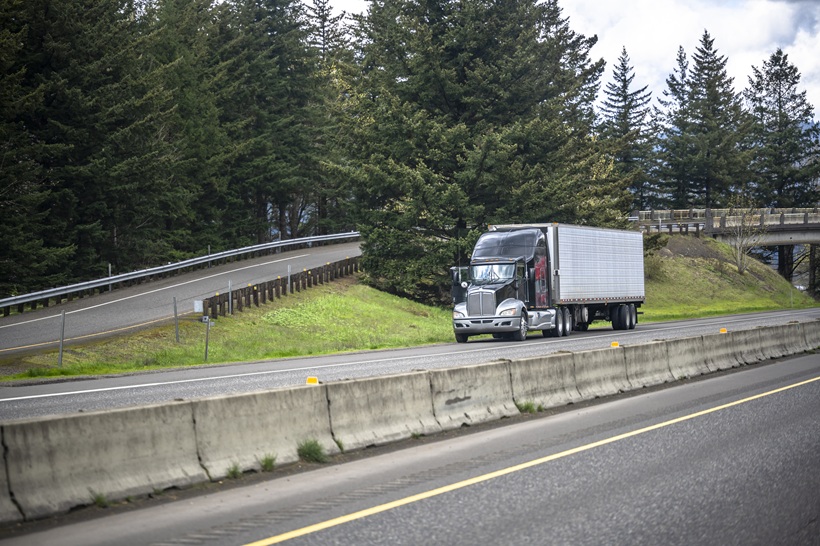
Time Travel Through 120 Years of Trucking With A Look at Each Decade Since 1898
By Matthew Meeks

It’s time to hop in the trucking time machine and see where it all began…
We’ll jump back in time 120 years to what’s believed to be the very first “semi-truck.” Then, we’ll watch the industry unfold over the years as we travel through two world wars and see trucking culture take flight.
We’ll wrap things up as we head ‘back to the future’ to see where the trucking industry’s headed.
Fire up the flux capacitor, Marty McFly.
Let’s GO!
1898
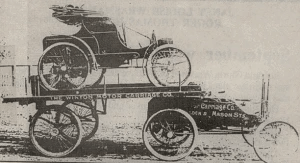
The first truck/trailer combo is invented by Alexander Winston in Cleveland.
Winton Invents the semi-trailer to deliver his “horseless carriages” (AKA cars) to customers living outside the city.
1910

A Car Being Delivered on a Packard Truck Circa 1910
There are only 10,000 trucks in the whole country (most of which are delivering only within larger metropolitan areas).
They’re all operating with solid rubber tires making for rough slow trips.
1914

The World War I Liberty Truck
Trucks are especially useful during WWI and the potential of these vehicles becomes clear. As a vital means to transport people and items during the war, trucks prove their practicality.
Trucks are also being praised as an ideal alternative to congested railroads.
1916

The Seattle Chamber of Commerce sponsors a truck and driver to travel from Seattle to New York City.
The goal is to show the importance of highways and the future of transport.
The trip takes 31 days in total to complete.
1920s
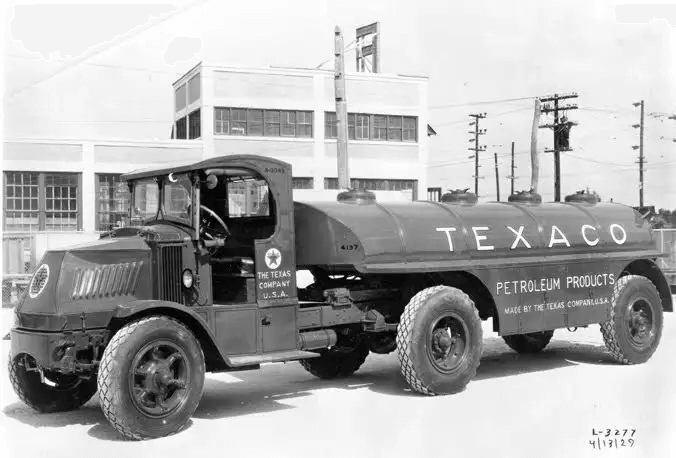
Now most trucks are equipped with pneumatic tires (AKA air-filled tires). Rides are much smoother for the drivers and speeds and delivery times are greatly improving.
1927

1920s Mack AC truck
Mack pioneers the use of power brakes on trucks by using a vacuum-booster system.
1935
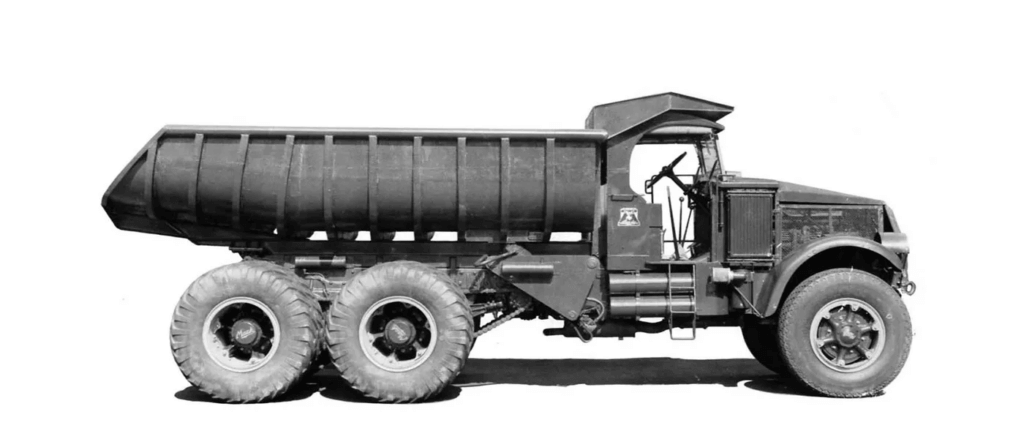
A Mack truck from the 1930s that assisted with the building of the Boulder Dam
The Motor Carrier Act is passed, presenting a set of regulations for all trucks operating on the nation’s highways.
The act establishes freight-hauling rate regulations, limits the number of hours that truckers are allowed to drive, and oversees trucking company’s range and the type of freight they carry.
Source: commercialwebservices
1940s

Truck stops are starting to offer diesel fuel at their pumps.
An ongoing effort is in place to extend the interstate highway system across the United States.
1940-1945

It’s WWII and manufactures are building heavy-duty trucks to support the allied forces.
1953
The average price of diesel fuel is only 14.9 cents per gallon!
Also, Freightliner introduces the first overhead sleeper.
1960s
Trucking starts gaining national attention with songs and movies about truck driving becoming major hits.
1970s

Trucking/trucker culture continues to grow in popularity through films which paint truck drivers as outlaws.

MAY 29 1979; Trucker Protest organizer being handcuffed by Denver Police after he refused to move his tractor trailer. Fifteen truckers participated in the protest to dramatize the sharp increase in fuel costs; (Photo By John Prieto/The Denver Post via Getty Images)
Additionally, thousands of independent truckers participate in strikes and protests against the rising cost of fuel, during the energy crises of 1973 and 1979.
1980

1980 International Transtar II
The trucking industry is deregulated by the Motor Carrier Act, moving it to a free enterprise system. This results in growth that doubled the number of trucking companies over a period of 10 years.
1990s
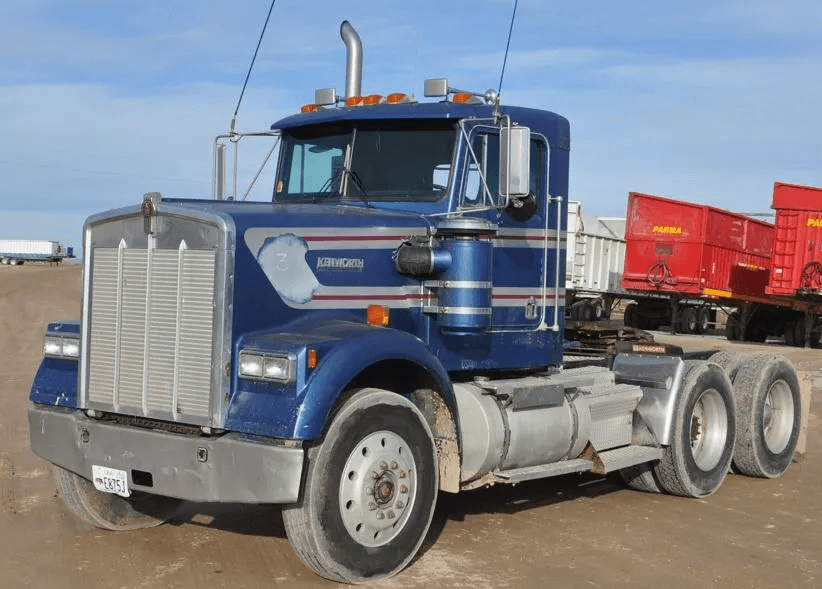
A 1990 Kenworth W900
We’re now in the decade of REGULATIONS.
A strong focus on driver safety and environmental concerns results in a series of major changes. 1992 sees a new law requiring all truck drivers operating rigs over 26,000 pounds to obtain a Commercial Driver’s License.
Fast forward to 1994 and the Trucking Industry Deregulation Act prohibits regulation at the state level.
Source: www.truckinginfo.com
Two years later in 1996, “the Interstate Commerce Commission (is) abolished, with remaining rules transferred to a new Surface Transportation Board within DOT.”
Another two years later and air-braked trucks and trailers now require antilock brakes.
And as if that wasn’t enough…
To round out the decade, a law is passed by Congress in 1999 to create a separate trucking safety administration to address ongoing concerns within the industry.
Great Scott! The ’90s were heavy.
2000s
Y2K brings more challenges: driver shortages, HOS regulations, severe winter weather, terrorism (9/11), spiking fuel costs, and more.
The internet alone is the source of major change in the trucking industry (and all industries for that matter).
The Federal Motor Carrier Safety Administration is officially established in 2000 and long-awaited hours of service (HOS) reform is implemented in 2004.

2008 sees diesel prices spike to over $5 per gallon in certain parts of the United States.
2018
The ELD mandate is officially in effect and a tsunami of trucks/fleets switch over to stay compliant.
2019
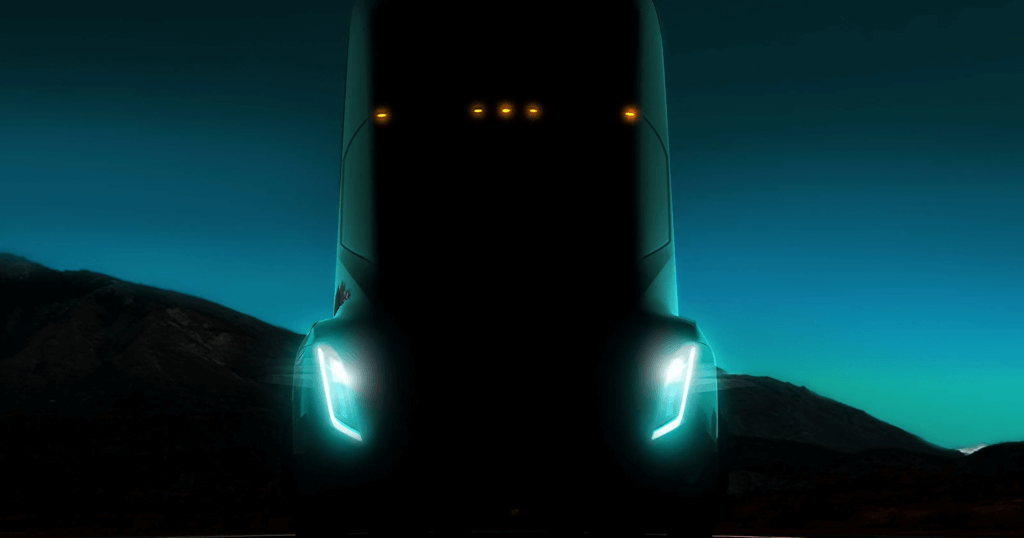
Tesla Semi
We don’t even need to step into the DeLorean to see the future of trucking – It’s unfolding before our very eyes right here in 2019! With self-driving trucks, astounding new tech and interesting laws being passed, the future is NOW.
For a glimpse into the future of trucking, check out these hot topics:
- Tesla has been up to some science fiction looking stuff. See more here.
- The discontinuation of AOBRD and why you need to ACT NOW.
- How the legalization of recreational marijuana use is changing the trucking industry.



